Midwest Lawn Pests: Identification & Treatment
Here in the Midwest, we only have a limited stretch of time to get outside and enjoy our lawn. We at Ryan Lawn & Tree know how important that time is, making memories with family and friends.
Unfortunately, though, you’re not the only one trying to enjoy the lawn. Insect pests and even pesky rodents can quickly invade your precious space if you aren’t careful, damaging your turf and bringing potentially harmful diseases.
Keeping your lawn healthy and well-maintained is one of the best ways to keep pests at bay. When coupled with some preventative actions, you can further increase the chances you won’t have any problems.
Prevention, however, is not 100% effective, and that’s where RYAN comes in!
Let’s talk about some of the common Midwest lawn pests and rodents, what brings them into your yard, their dangers, and the best ways to keep control of your yard.
Common Lawn Pests and Rodents
Midwest Lawn Pests
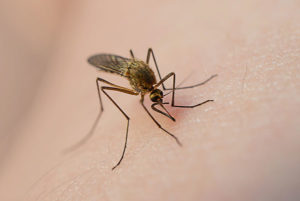
- Mosquitos don’t damage the lawn specifically, but a large population makes your yard unusable.
- Fleas are tiny brown to reddish-brown wingless parasites. Heavy infestations cause patchy, thin spots in the grass.
- Ticks have a tear-drop or flattened oval-shaped body that plumps up and rounds out after feeding. Adult ticks and their nymphs have eight legs, and larvae have six. They damage the lawn by burrowing into the thatch, thinning the grass.
- Carpenter ants are much bigger than black garden ants and are typically reddish-brown to dull black. They feed on other insects, pet foods, plant fluids, fruits, and honeydew, a sugar-laden solution excreted by other pests.
- Spiders rarely damage the grass but make lawns look unkempt.
- Millipedes eat plant matter if other food sources are low, focusing on leaves, roots, and shoots.
- Grubs are the larvae of some scarab beetle species, including Japanese beetles and masked chafers. When the weather is warm, the c-shaped larvae feed on the grass roots underneath the soil surface.
- Chinch bugs look different depending on their life stage and species. These sap-sucking pests feed on nutrient-rich sap within the grass. Their feeding makes grasses wither and die.
- Armyworms start as 1-2” long yellow to pink worms, depending on the species, and then become brown moths as adults. They eat the blades and stems of grass, creating circular bare spots in yards.
- Sod webworms grow to about 1” long, becoming green or brown with dark spots. They eat the entire stems and blades of grass, leaving brown patches in the turf.
- Billbugs, or hunting billbugs, eat holes into blades of grass and deposit eggs inside. When the billbug larvae hatch, they eat their way out of the grass, devouring the entire blade.
- Cutworms are larvae of different adult moth species. At night they eat grass blades and stems, so it looks like the grass has been cut at the base and then burrow back through the thatch into the ground.
Midwest Lawn Rodents
Rodents are small to medium-sized mammals with extra-large front incisors that continuously grow. This continuous growth causes the animals to gnaw on items, wearing off the bottom of these sharp teeth, keeping them at a manageable size. The need to constantly nibble is why they are problematic in your yard.
Field mice are also commonly known as deer mice. They have a gray or brown coat, a white underbelly, and a hairless tail.
- House mice always have a single coat color and have larger eyes and ears and a longer tail than field mice.
- Norway rats are usually grayish brown but can also be reddish-brown or black. They are considerably larger than mice and cause considerable damage with their gnawing activity.
- Squirrels damage lawns by digging holes for acorn storage and then again when collecting their nuts.
- Plains pocket gophers create extensive underground burrows and tunnels, creating extreme lawn damage.
- Woodchucks look like beavers without tails and are the largest member of the squirrel family. Their burrows damage lawns, and they gnaw and claw at the trunks of trees and stems of shrubs.
- Voles are often confused for mice, but they are stouter and have shorter tails. They mainly eat the roots and stems of plants, creating 1-2” wide irregular paths through the grass.
- Moles are small and gray, without ears, and their ears are hard to discern. They don’t eat grass but cause significant damage to lawns with their tunnels.
If you see holes in your lawn, but the rodents aren’t making themselves visible for identification. In that case, the Internet Center for Wildlife Damage Management has a fantastic page on ground hole identification.
What Attracts Lawn Pests and Rodents to Your Lawn?
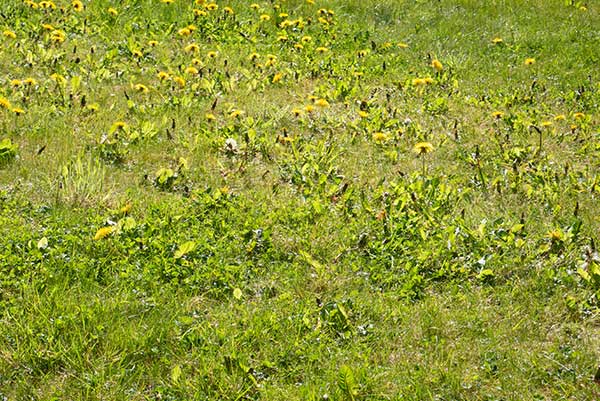
Lawn pests such as insects and arachnids are attracted to neglected lawns that are overgrown or full of weeds and dandelions since these yards have an abundance of vegetation to eat and thick cover to keep the pests safe from predators.
Rodents are drawn to food sources such as bird feeders, unattended pet food, unsealed trash cans, compost piles, and vegetable gardens. Piles of yard waste or debris, wood, or overgrown vegetation are attractive to rodents because the material serves as a shelter from predators and weather.
Dangers of Lawn Pests and Rodents
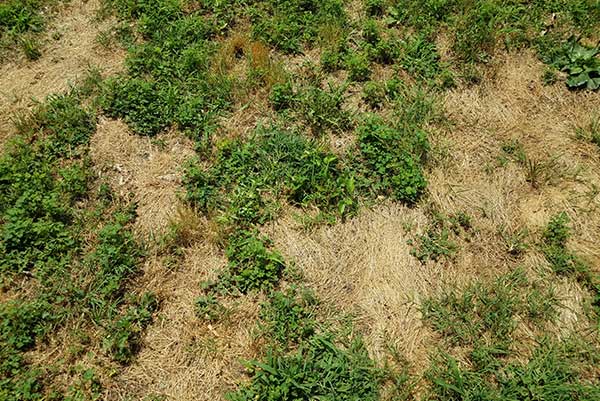
Dangers of Insect Pests In Your Lawn
- Ticks transmit Lyme disease, Rocky Mountain Spotted Fever, and anaplasmosis.
- Mosquitoes transmit West Nile Virus, Zika virus, dengue, and types of encephalitis.
- Spiders like the brown recluse and black widows are venomous, and bites cause muscle pain and weakness, nausea, weakness, and tissue necrosis.
- Fleas carry diseases such as typhus and the plague. Pets can bring fleas into your home, where they quickly increase, becoming a significant infestation and challenge to control.
Dangers of Rodents In Your Lawn
- Squirrels often move inside your home looking for nesting areas. Once inside, they are known to destroy insulation and chew through wiring, but they also carry diseases like rabies, tularemia, and Lyme disease.
- Mice and rats can enter your home and cause structural damage, destroying insulation and wiring. They also carry salmonellosis, leptospirosis, hantavirus, and lymphocytic choriomeningitis (LCM).
Best Ways to Prevent Lawn Pests
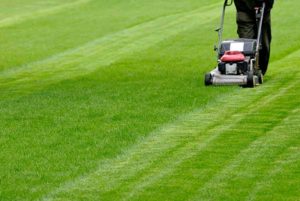
A highly successful way to prevent insect pests and rodents from moving into your yard is to keep your grass thick and healthy.
- Plant a grass type suited for your climate and your lifestyle (warm-season versus cool-season grass, high traffic areas, drought-tolerant or moisture-loving, shade tolerant or full sun, etc.).
- Water efficiently to promote good root growth. Watering slowly to a deeper depth allows you to water less often. In turn, you minimize runoff without creating high humidity areas that attract pests.
- Reseed bare spots and overseed thin areas during spring or fall, depending on your grass type.
- Mow your grass at its recommended height. Cutting it too short promotes excess thatch—a layer of tightly knit dead stems, debris, and other organic material. When thatch gets too thick, it inhibits water and air movement into the soil and provides an ideal habitat for pests. An ideal height for Midwestern grass is about three inches tall.
Beyond good lawn care, here are some other prevention tips.
- Keep your house clean and store food items in sealed containers.
- Prevent areas with standing water on your property.
- Use a compost tumbler instead of an open pile.
- Keep vegetation trimmed around your house and outbuildings.
- Keep wood piles at least 20 feet from your home.
- Use lidded trash cans for storing garbage bags.
- Do not leave pet food or bird feed in open containers or places they are easily accessible.
- Place bird feeders on metal poles, away from trees or other structures. Rodents can’t climb the metal pole and can’t jump from something nearby.
- Strategically place plants around your lawn and garden that naturally repel pests. Herbs such as basil, oregano, thyme, rosemary are commonly used, as are vegetables like onions and garlic and some flowering ornamentals like marigolds, nasturtium and pennyroyal.
Treatment Options
There are different ways to deal with pests and rodents.
Chemical Treatment Options
A range of chemical-based control products are available for both indoor and outdoor pests. Treatments include pesticides, rodent repellents, and rodenticides. Always follow label directions carefully when applying.
Organic Treatment Options
Organic options for insect pest control include neem oil, insecticidal soaps, diatomaceous earth, and Bacillus thuringiensis (Bt).
Natural Treatment Options
- One common approach for managing insect pests is introducing predatory or parasitic insects to your yard. Predators feast on the problematic pests, bringing numbers down. Parasitic insects find a host insect and lay their eggs inside or on the host; when the larvae hatch, they feed on their victim. Common beneficial insects include braconid wasps, dragonflies, and minute pirate bugs.
- Trapping rodents and physically removing them from your yard is feasible if you’re dealing with a small population of larger rodents.
Reach Out For Help If Needed
Sometimes, a pest problem can leave you scratching your head. If you are in this situation, or if you are interested in additional natural options, turn to your local nursery. The staff is typically a fantastic resource as they are well acquainted with midwest soil types, regional climates, and the pests specific to this area.
RYAN is Now Offering a Complete Lawn Pest Control Service
If you struggle with lawn pests and need professional help, contact Ryan Lawn & Tree today to schedule a PestGuard Plus service evaluation!
We have combined our four most popular home pest control services into a complete year-round program. It includes our Home Insect Barrier, Flea and Tick Control, Mosquito Control, and Rodent Guard.
Our PestGuard Plus service keeps pests out of your home AND out of your yard so you can enjoy summer indoors OR out.
Contact us today to get your Free Estimate for help with lawn pest needs by a RYAN pest control professional!

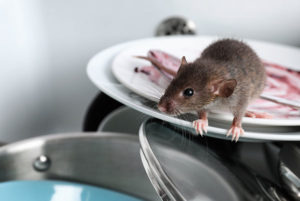 Field mice are also commonly known as deer mice. They have a gray or brown coat, a white underbelly, and a hairless tail.
Field mice are also commonly known as deer mice. They have a gray or brown coat, a white underbelly, and a hairless tail.







